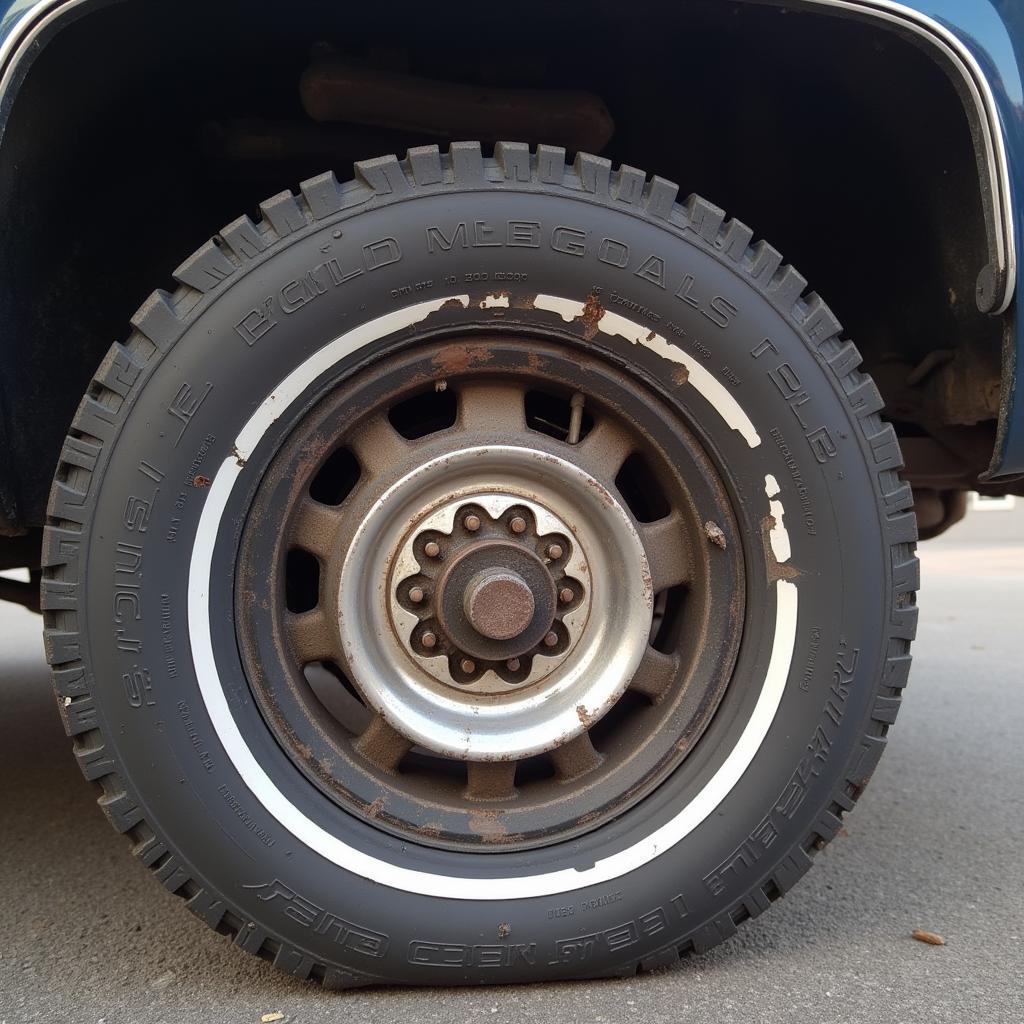The brake warning light on your dashboard is a crucial safety feature in your 1985 Chevrolet K20. When illuminated, it signals a potential issue with your braking system that requires immediate attention. Ignoring this warning could lead to reduced braking performance and increase the risk of an accident. This comprehensive guide will walk you through the common causes of a brake warning light on a 1985 Chevrolet K20 and provide you with practical solutions to troubleshoot and fix the problem.
While this guide provides general information, remember that diagnosing and repairing automotive brake systems can be dangerous and should always be performed by a qualified mechanic. If you are unsure about any step, seek professional assistance to ensure your safety and the proper functioning of your vehicle.
Understanding Your K20’s Brake Warning Light System
Before we delve into troubleshooting, it’s crucial to understand how your K20’s brake warning light system operates. The system is designed to alert you of two primary issues:
- Low brake fluid level: A drop in brake fluid often indicates a leak within the system, compromising your brakes’ ability to function correctly.
- Engaged parking brake: While not a fault, the warning light serves as a reminder if you’ve left your parking brake partially or fully engaged.
Common Causes and Solutions for a Brake Warning Light
Here are the most common culprits behind a glowing brake warning light in your 1985 Chevrolet K20, along with steps to help you diagnose and address the issue:
1. Low Brake Fluid Level
Diagnosis:
- Safely park your K20 on a level surface and engage the parking brake.
- Locate the brake fluid reservoir under the hood. It’s typically a translucent plastic container with a black cap labeled “Brake Fluid.”
- Check the fluid level. The reservoir will have “Min” and “Max” lines marked on the side. If the fluid level is below the “Min” line, you have low brake fluid.
Solution:
- Add brake fluid: Carefully remove the reservoir cap and slowly add the correct type of DOT brake fluid (as specified in your owner’s manual) until it reaches the “Max” line.
- Inspect for leaks: A low fluid level usually signals a leak. Carefully examine the brake lines, hoses, calipers, and wheel cylinders for any signs of wetness or fluid seepage. If you find a leak, it needs immediate repair by a qualified mechanic.
2. Worn Brake Pads
Diagnosis:
- While worn brake pads don’t always directly trigger the warning light, they can indirectly contribute to low brake fluid levels as the calipers need more fluid to compensate for the worn pads.
- Inspect your brake pads by looking through the spaces between the wheel spokes. You’ll likely need a flashlight for better visibility. Thin pads (less than ¼ inch) indicate wear and need replacement.
Solution:
Worn brake pads require immediate replacement to ensure safe braking. It’s best to have a mechanic replace the pads, as it involves working with the brake system and requires proper tools and expertise.
 Worn Brake Pads on a 1985 Chevrolet K20
Worn Brake Pads on a 1985 Chevrolet K20
3. Faulty Brake Light Switch
Diagnosis:
- The brake light switch, located above the brake pedal, can malfunction and cause the brake warning light to illuminate.
- Test the switch by depressing the brake pedal and checking if the brake lights engage. If the lights don’t come on or remain on even when the pedal is released, the switch likely needs replacement.
Solution:
Replacing a brake light switch typically involves accessing it under the dashboard and disconnecting the electrical connectors. While a relatively straightforward procedure, it’s advisable to have a mechanic handle the replacement to ensure it’s done correctly.
4. Issues with the ABS System (If Equipped)
Diagnosis:
Some 1985 Chevrolet K20 models may have been equipped with an Anti-lock Braking System (ABS). If your truck has ABS, a fault in the system, such as a malfunctioning wheel speed sensor or a problem with the ABS module, can trigger the brake warning light.
Solution:
Diagnosing and repairing ABS issues require specialized diagnostic tools and expertise. If you suspect a problem with your ABS system, it’s best to take your truck to a qualified mechanic specializing in automotive electronics and ABS systems.
 ABS Warning Light on a 1985 Chevrolet K20 Dashboard
ABS Warning Light on a 1985 Chevrolet K20 Dashboard
Conclusion
Addressing a brake warning light in your 1985 Chevrolet K20 is crucial for your safety and the vehicle’s well-being. While some causes, like low brake fluid, might have simpler solutions, others require the expertise of a qualified mechanic.
Remember, neglecting brake issues can lead to more costly repairs and, more importantly, compromise your safety on the road. Always prioritize a thorough diagnosis and timely repair to ensure your 1985 Chevrolet K20’s braking system remains in optimal condition.

